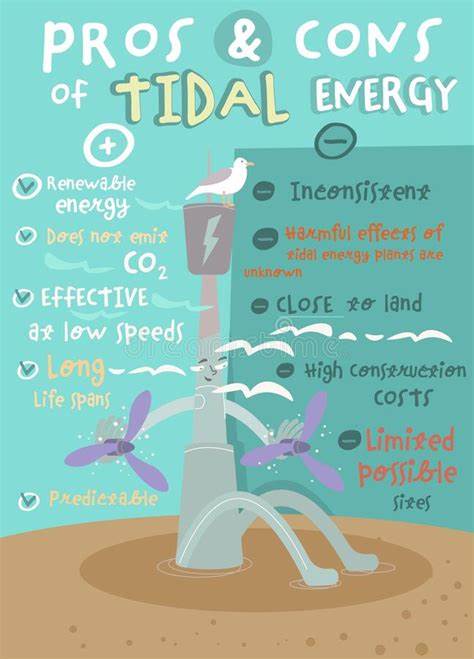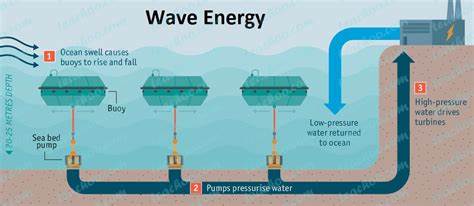
Introduction
Wave and tidal energy are forms of renewable energy derived from the ocean’s natural movements. These sources have gained increasing attention due to their potential as clean and sustainable alternatives to traditional fossil fuels. In this article, we will explore the historical background, key concepts, advantages and disadvantages, economic implications, technological advancements, case studies, current trends, challenges, future outlook, and the importance of wave and tidal energy in shaping our renewable energy landscape.
Historical Background
The history of wave and tidal energy can be traced back to ancient civilizations that used the power of the ocean for various purposes. However, it was not until the 20th century that serious attempts were made to harness this energy on a larger scale. The development of wave energy converters and tidal turbines in the 1970s marked significant milestones in the field, leading to further research and technological advancements.
Key Concepts and Definitions
Wave energy refers to the capture and conversion of energy from the ocean’s waves, while tidal energy involves harnessing the power of tidal currents. Although both sources come from the ocean, they differ in terms of their mechanisms and available resources. Understanding key concepts such as power density, wave height, tidal range, and energy conversion systems is essential to grasp the complexities of wave and tidal energy.
Main Discussion Points
Advantages of Wave and Tidal Energy
Clean and renewable energy source: Wave and tidal energy offer a sustainable alternative to fossil fuels, reducing greenhouse gas emissions and combating climate change.
Predictable and reliable energy production: Unlike other renewable sources like solar and wind, waves and tides are consistent and predictable, ensuring a steady supply of electricity.

Potential for energy independence and security: Harnessing the power of the ocean reduces dependence on imported fossil fuels, enhancing energy independence and security for coastal communities.
Disadvantages of Wave and Tidal Energy
High initial costs and infrastructure requirements: The construction of wave and tidal energy projects involves significant upfront investments, making it a capital-intensive industry.
Potential environmental impacts: The installation of wave and tidal energy devices can have adverse effects on marine ecosystems, including alterations in seabed sedimentation and disruption to marine life.
Limited geographical availability: Wave and tidal energy resources are concentrated in specific regions, limiting widespread implementation and requiring careful site selection.
Economic and Social Implications
Job creation and economic benefits: The development of wave and tidal energy projects stimulates local economies by creating new job opportunities in manufacturing, installation, and maintenance.
Social acceptance and public perception: Public awareness and acceptance of wave and tidal energy play a crucial role in the success and expansion of these technologies. Public engagement and education are essential for fostering positive perceptions.
Technological challenges and advancements
Innovations in wave and tidal energy conversion systems: Ongoing research aims to improve the efficiency and reliability of wave and tidal energy devices, making them more competitive with other renewable energy sources.
Integration with existing energy infrastructure: The integration of wave and tidal energy into existing energy grids requires careful planning and coordination to ensure smooth integration and effective distribution of electricity.
Case Studies or Examples
Real-world examples of successful wave and tidal energy projects showcase the potential of these technologies. The Pelamis Wave Energy Converter in Portugal and the MeyGen Tidal Energy Project in Scotland are notable examples that have demonstrated the feasibility and scalability of wave and tidal energy on a commercial scale.

Current Trends or Developments
Recent research findings shed light on the advantages and disadvantages of wave and tidal energy. Studies focus on optimizing energy conversion efficiency, minimizing environmental impacts, and exploring innovative technologies such as underwater kites and bio-inspired designs. The use of artificial intelligence and machine learning algorithms to improve wave and tidal energy forecasting is also gaining traction.
Challenges or Controversies
Challenges surrounding wave and tidal energy include high costs, environmental concerns, and regulatory hurdles. Controversies arise from differing viewpoints on the impact of these technologies on marine ecosystems and the visual aesthetics of coastal landscapes. Balancing the need for renewable energy with environmental preservation remains a critical aspect of the ongoing debate.
Future Outlook
The future of wave and tidal energy holds promise, with advancements in technology and increasing global recognition of the need for sustainable energy sources. However, the industry’s growth will depend on supportive policies, government incentives, and international collaboration to overcome challenges and address public concerns.

Conclusion
Wave and tidal energy offer a clean, predictable, and renewable energy solution with the potential for energy independence and job creation. While challenges and controversies exist, ongoing research, technological advancements, and public engagement will shape the future of wave and tidal energy as a crucial component of our renewable energy mix.




